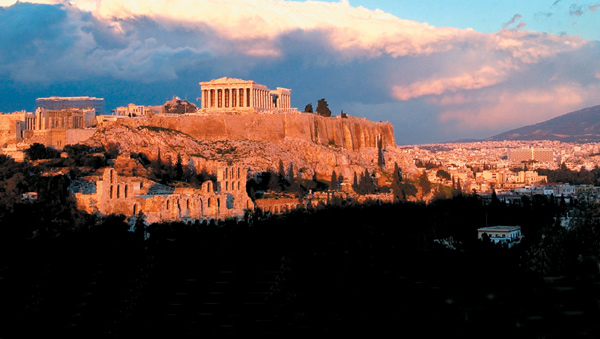
In 480 B.C.E. the Persians invaded Athens. According to the Greek historian Herodotus, they “plundered the temple and burnt the whole of the Acropolis.”1 Although the Athenians and their allies followed up with a victory at the famous naval battle of Salamis, the Persian army returned the following year and “burnt Athens and utterly demolished whatever wall or house or temple was left standing.”2 Ten years earlier, in 490 B.C.E., the Persian king Darius had invaded Greece, only to be thwarted on the plain of Marathon northeast of Athens. The devastating attacks of 480 and 479 B.C.E. were the revenge of Darius’s son and heir, Xerxes.
The Greeks forced the Persians to retreat from the country shortly after the second sacking of the city (though the Persian Wars would continue for another 30 years). The Athenians then “prepared to rebuild their city and their walls,” according to the Greek historian Thucydides (c. 460–400 B.C.E.). “For only isolated portions of the circumference had been left standing, and most of the houses were in ruins.”3
Already a library member? Log in here.
Institution user? Log in with your IP address.

